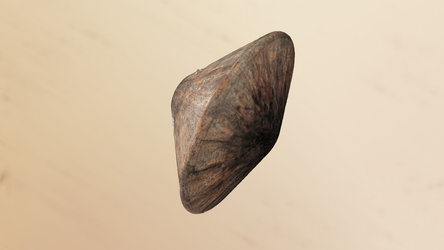

Origami heat shield: reusable for reentries
Thank you for liking
You have already liked this page, you can only like it once!
A novel origami-based heat shield developed with ESA support is planned to be tested with an actual atmospheric reentry from space. Named Pridwen, after the legendary shield of King Arthur, this reusable design will spring out before a spacecraft reenters the atmosphere.
As a spacecraft commences its return to Earth and encounters the atmosphere its orbital velocity gets converted into such high heat fluxes that an unprotected spacecraft will simply burn up. Which is where heat shields come in.
Standard ‘ablative’ heat shields remove unwanted heat by having pieces of the shield gradually burn off. Instead of ablation, Pridwen relies on radiation: its high temperature alloy fabric has a sufficiently high surface area that the heat flux can spread evenly across it to gradually radiate away.
The shuttlecock-style Pridwen shield will also serve to slow down a satellite sufficiently that it can survive landing without a parachute. Its maker, Space Forge in Cardiff, UK, plans to capture satellites with a hover net.
The heat shield has undergone multiple drop tests from as high as 17 km and practiced net captures of test items falling at terminal velocity. The company has developed Pridwen as part of a larger vision of in-orbit manufacturing of high-value goods such as pharmaceuticals, superconductors and super alloys, to be returned to Earth on a routine basis.
The first Pridwen heat shield is planned for flight aboard the company’s inaugural ForgeStar-1A mission later this year.
The project has been supported through ESA’s General Support Technology Programme – readying promising technologies for space and commercial markets – as well as the UK Space Agency.
-
CREDIT
Space Forge -
LICENCE
ESA Standard Licence

Cork vs. reentry

Landers need heat shields during reentry

Huygens' reentry shield

Schiaparelli with parachute deployed and front shiel…

